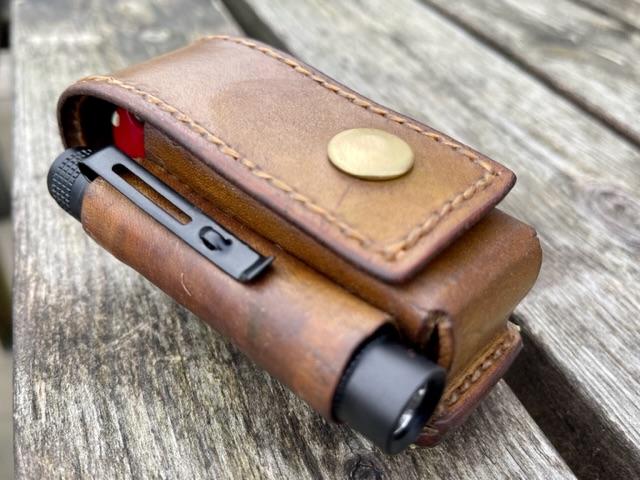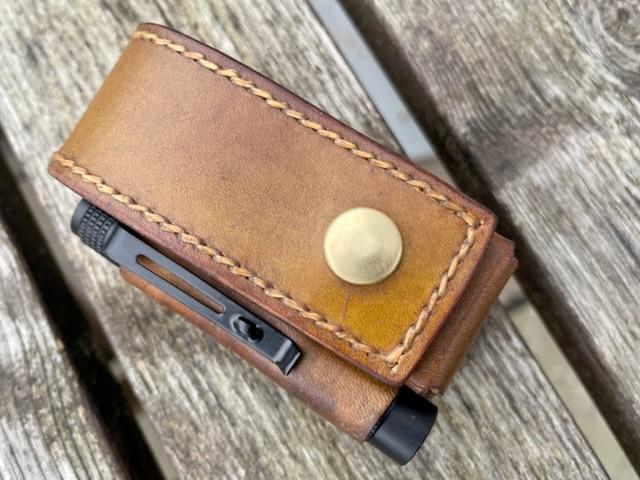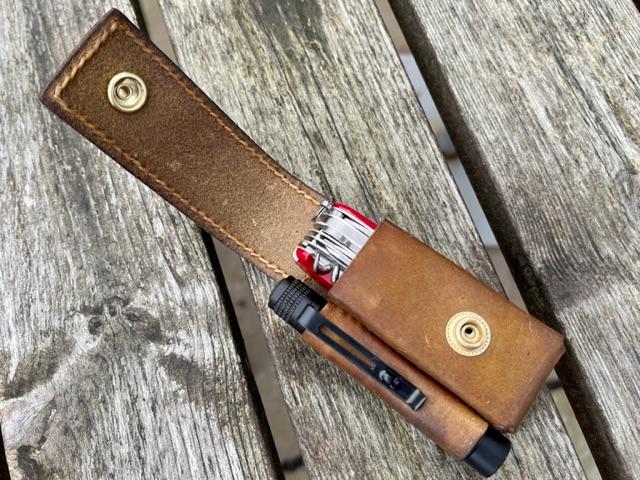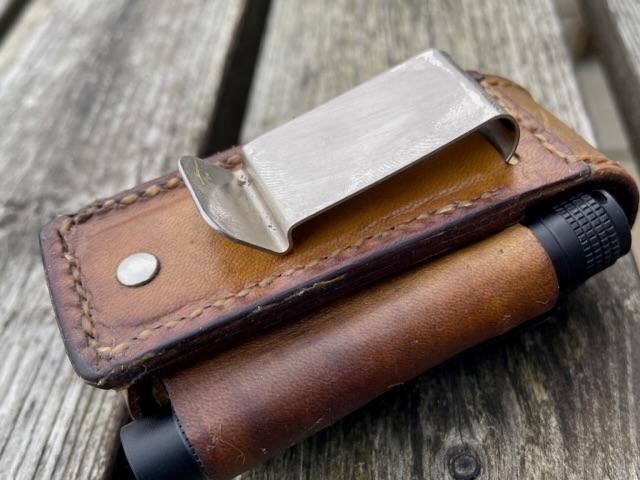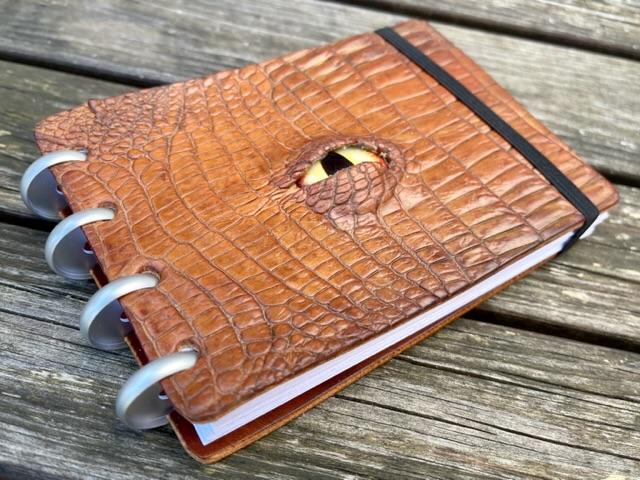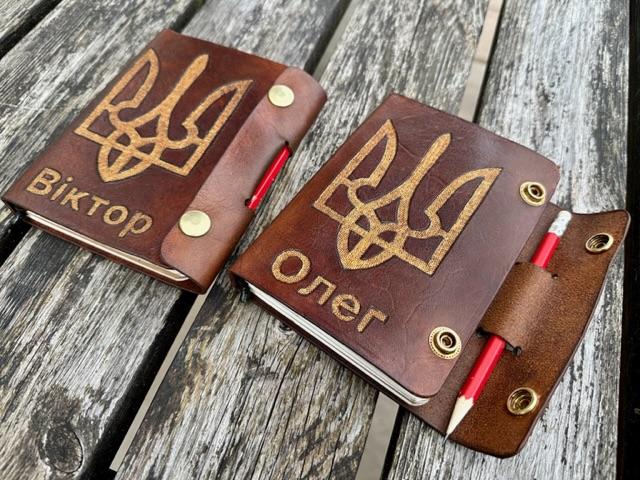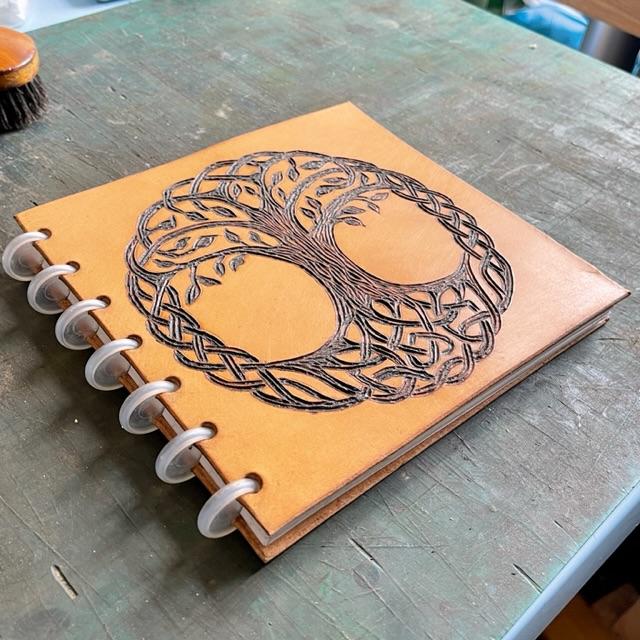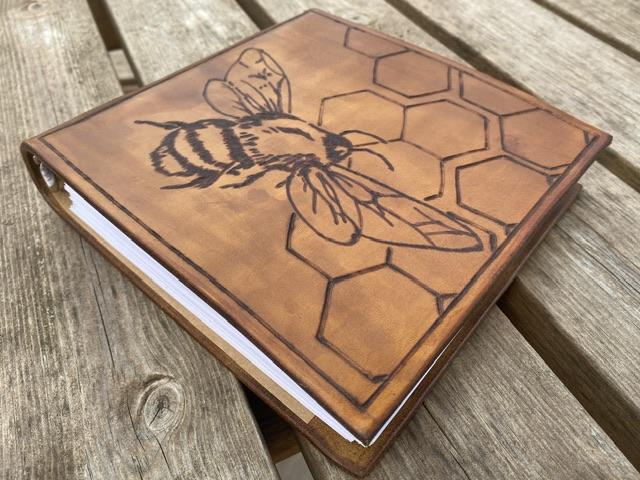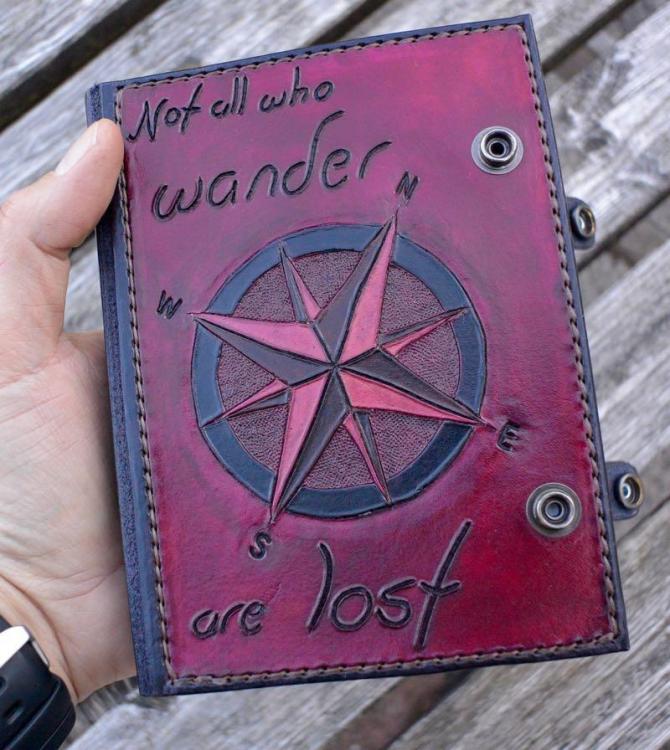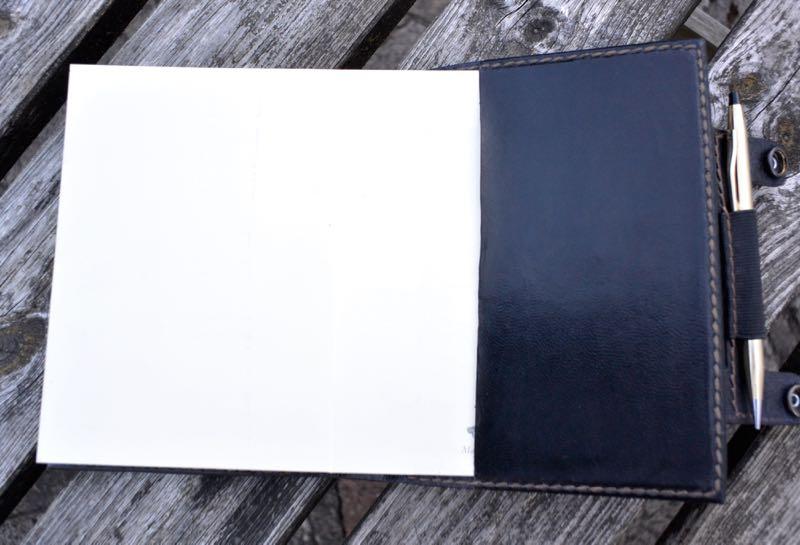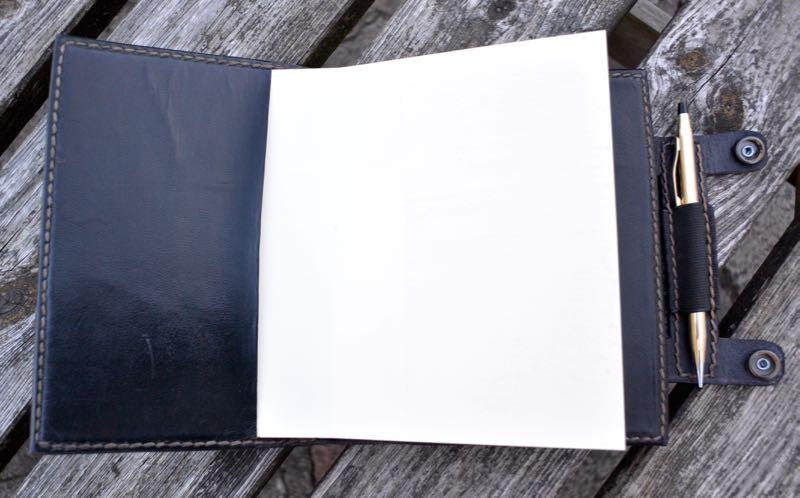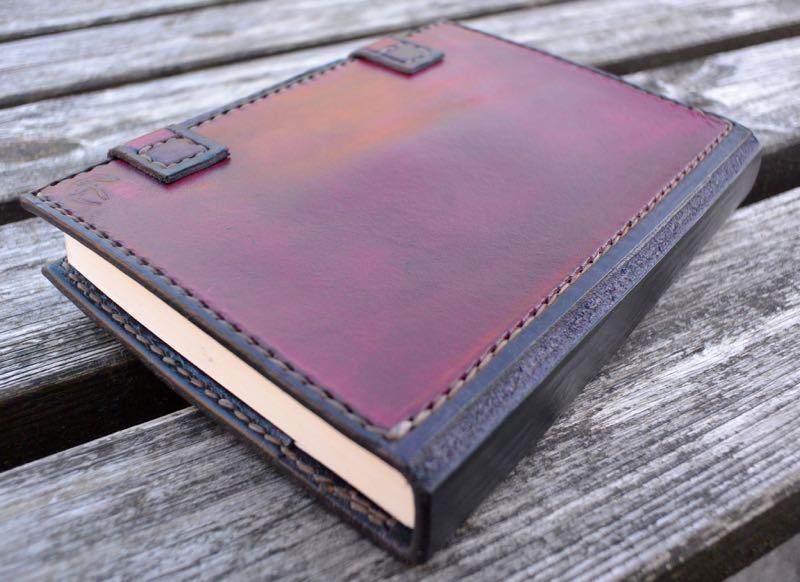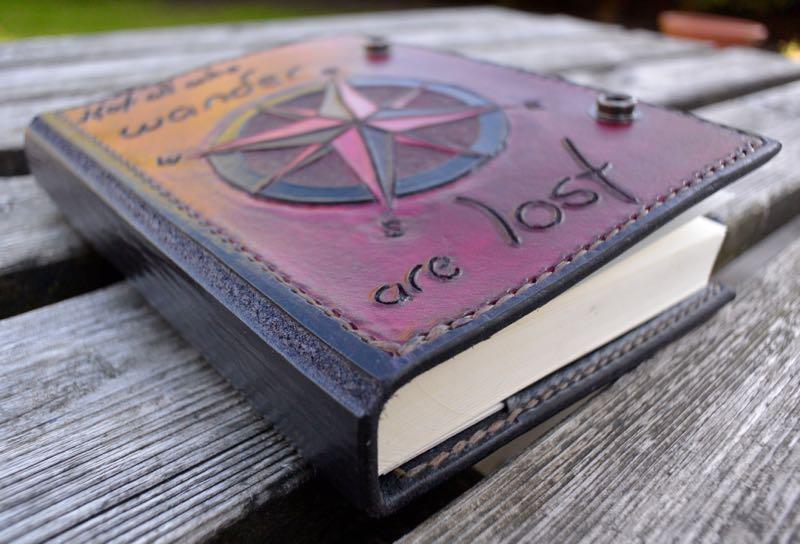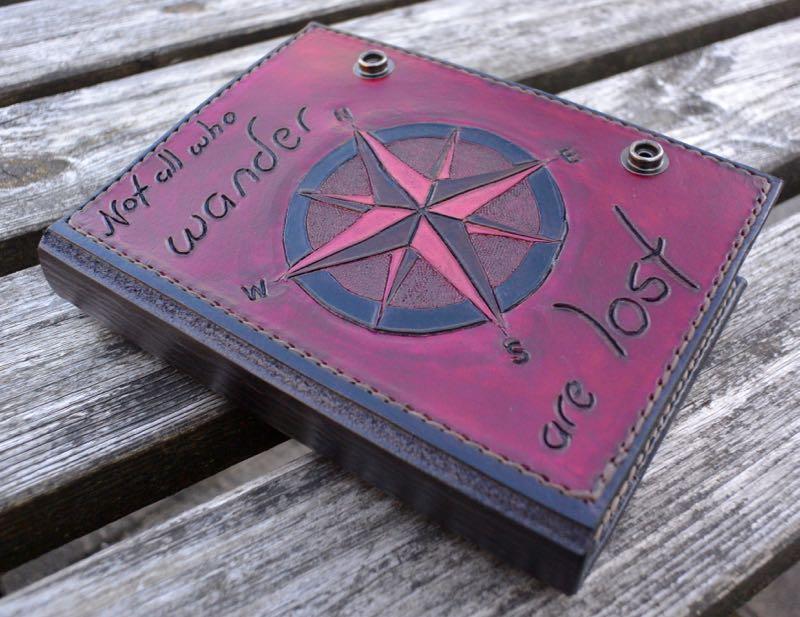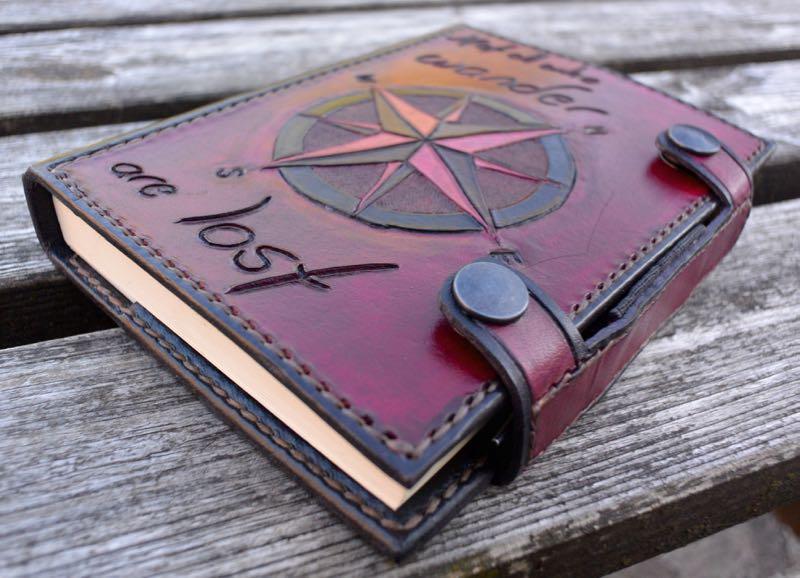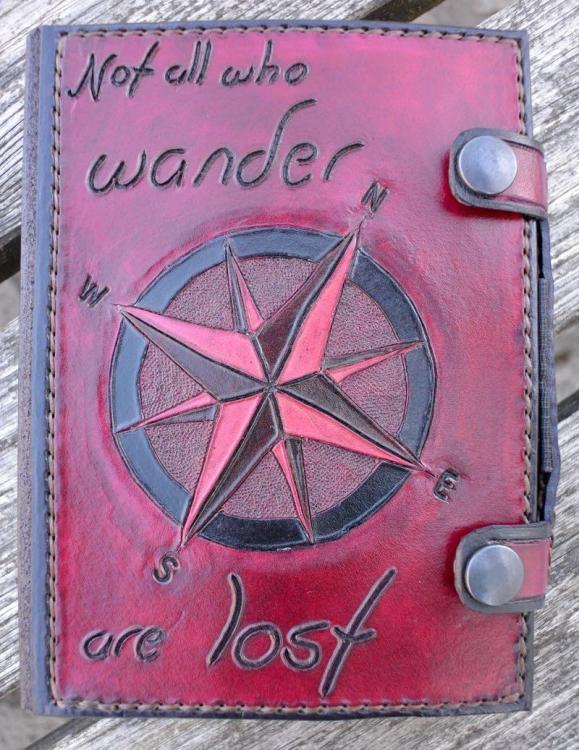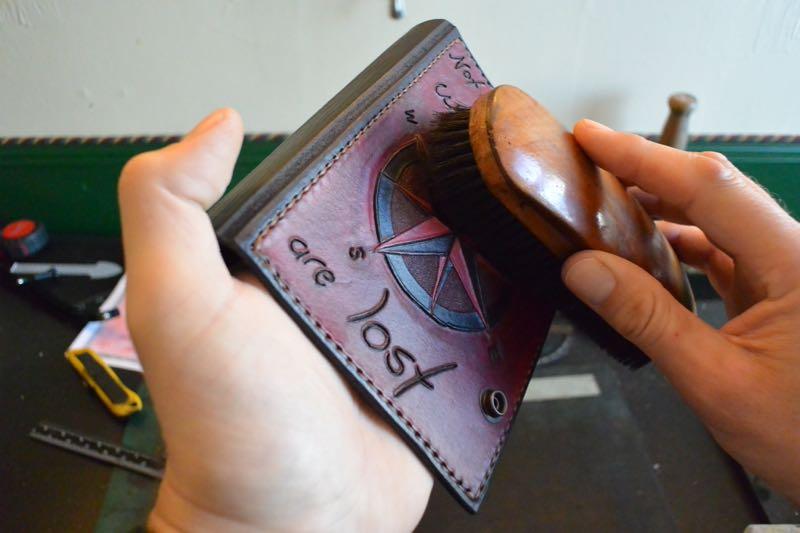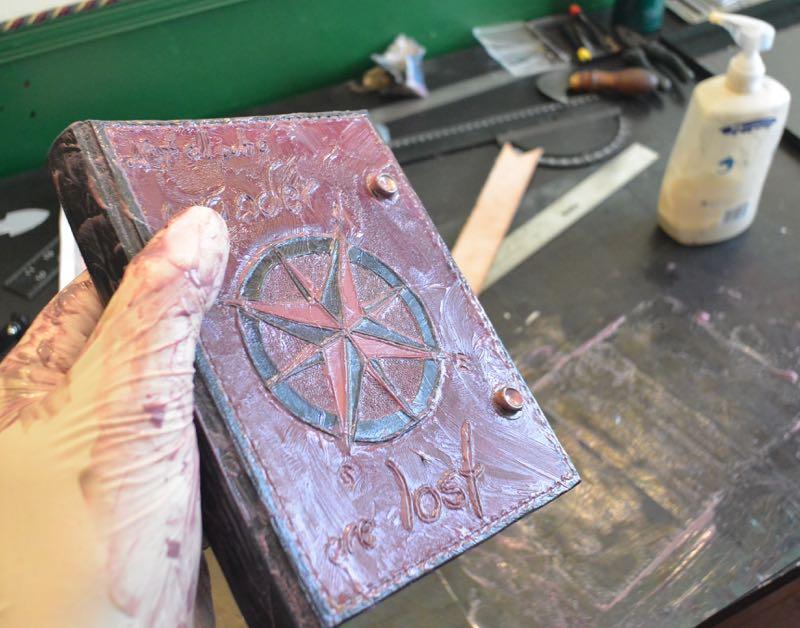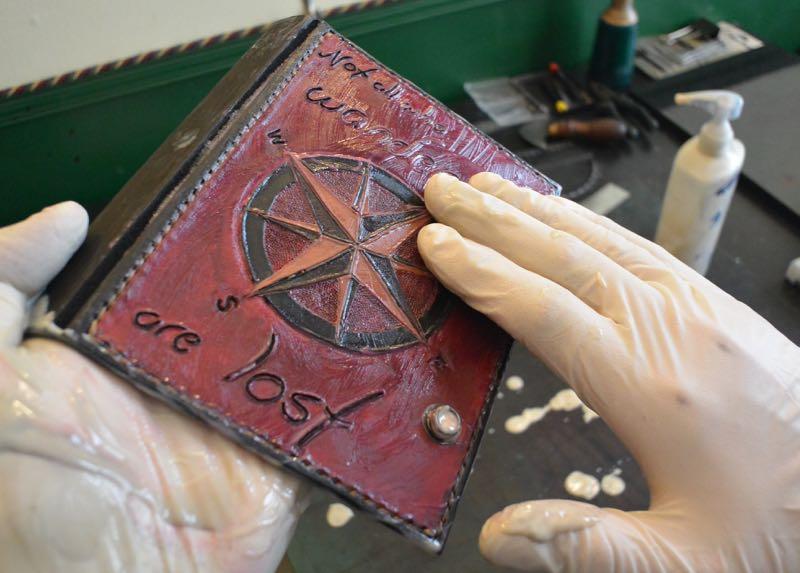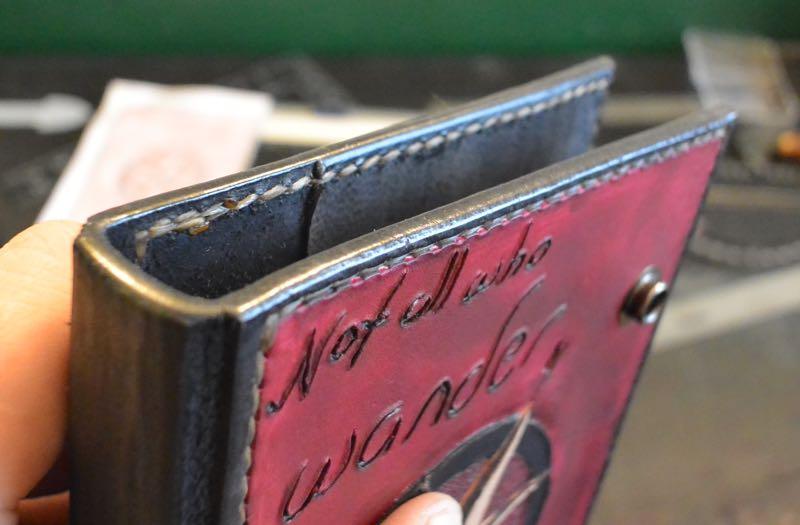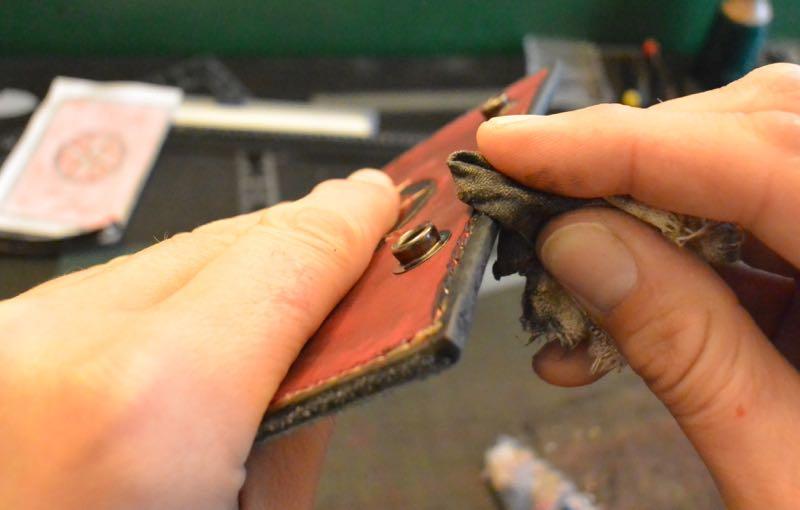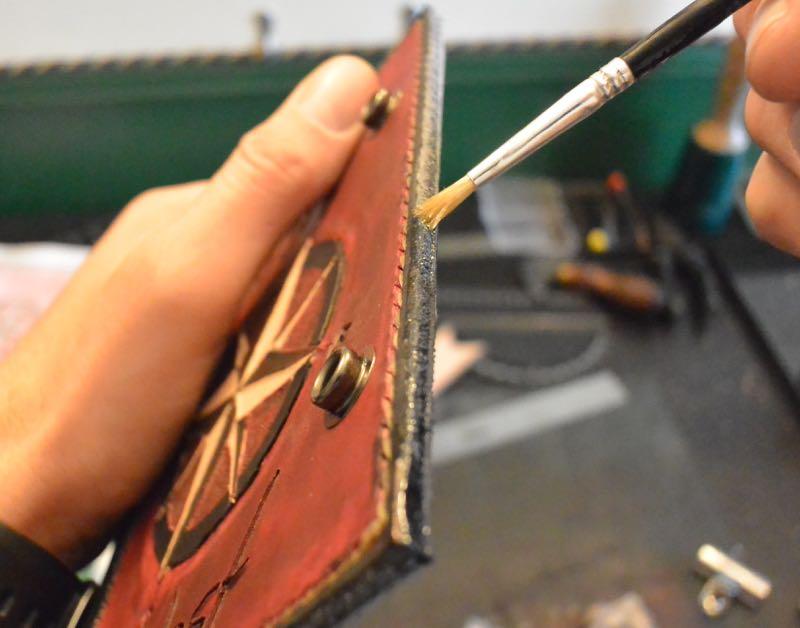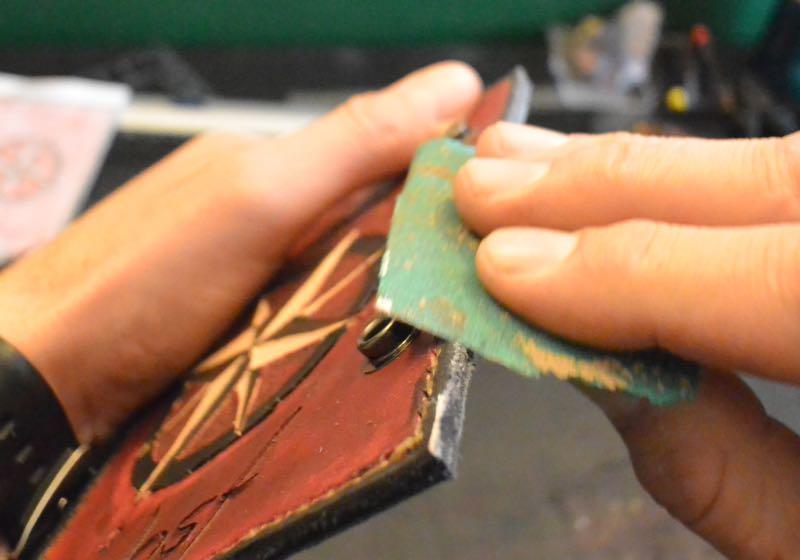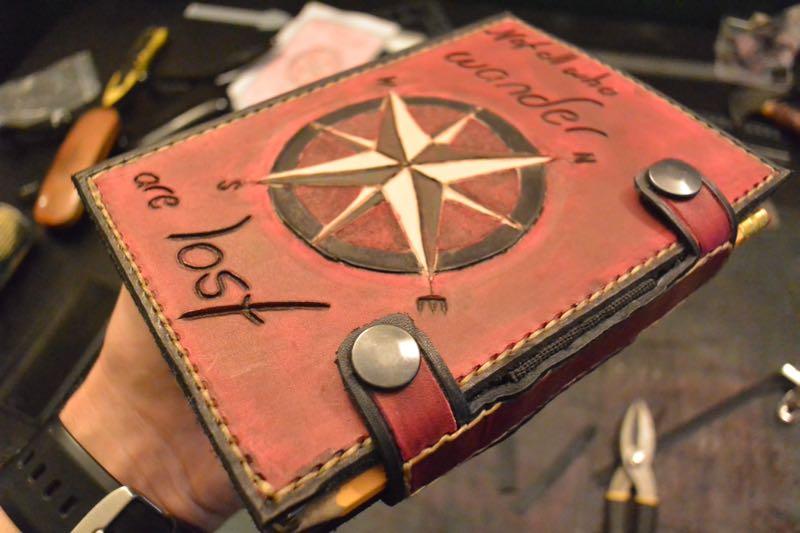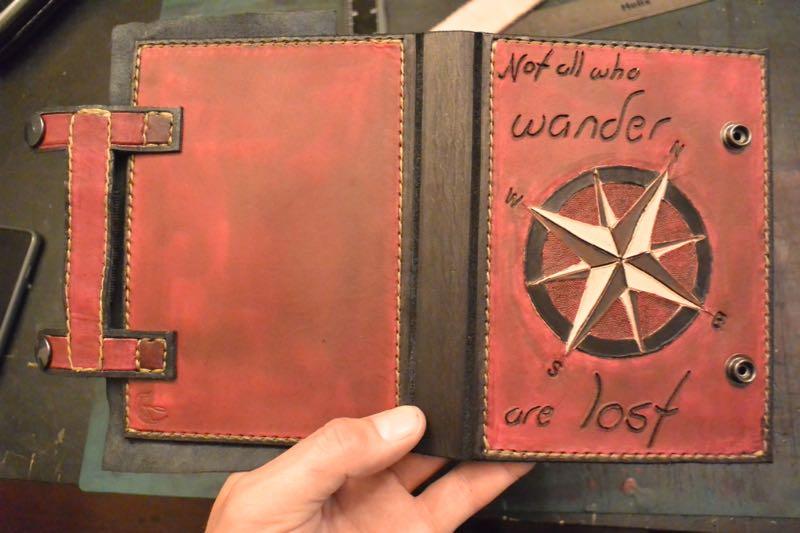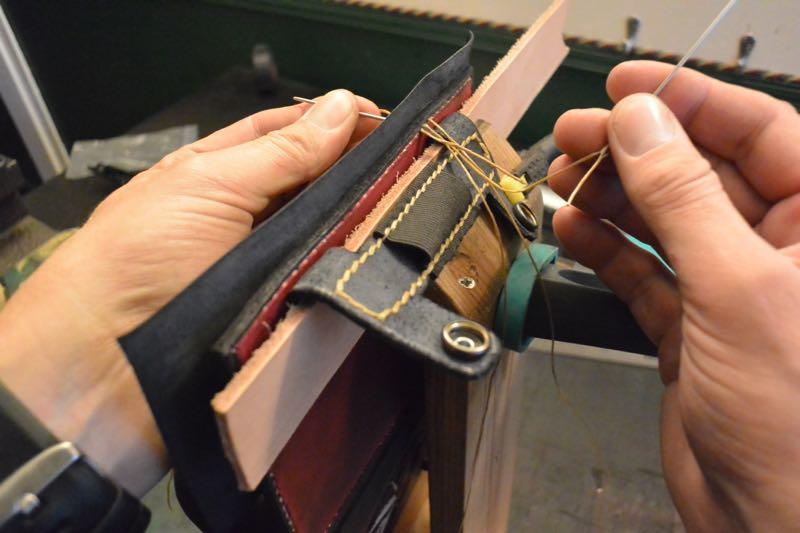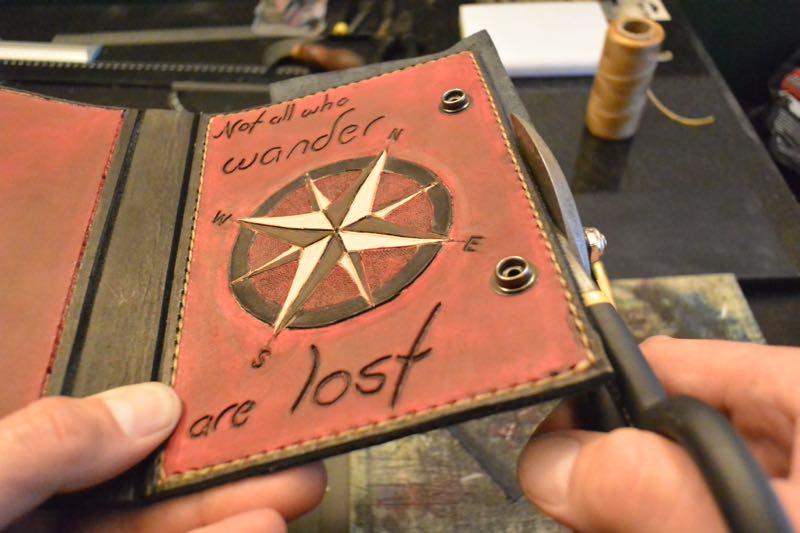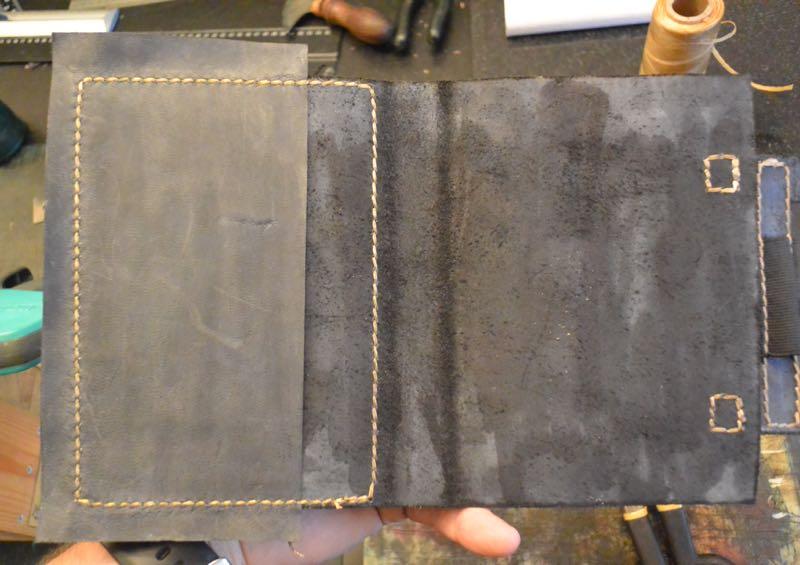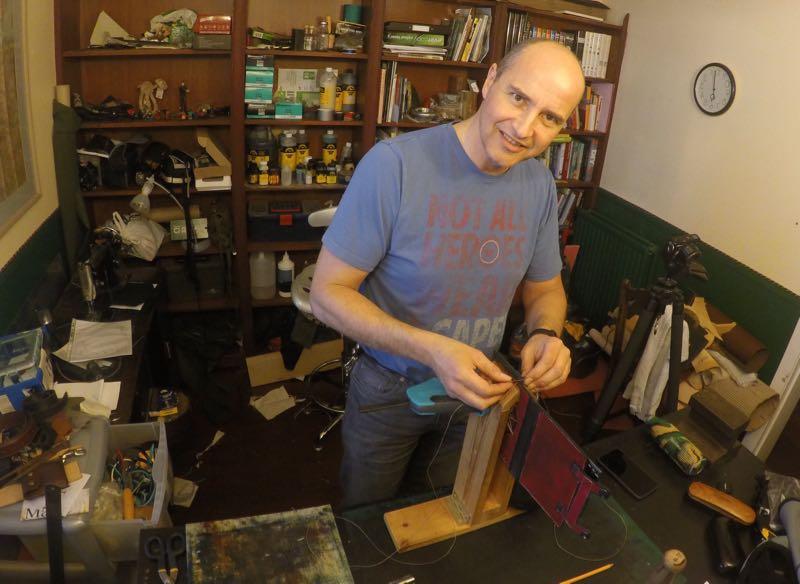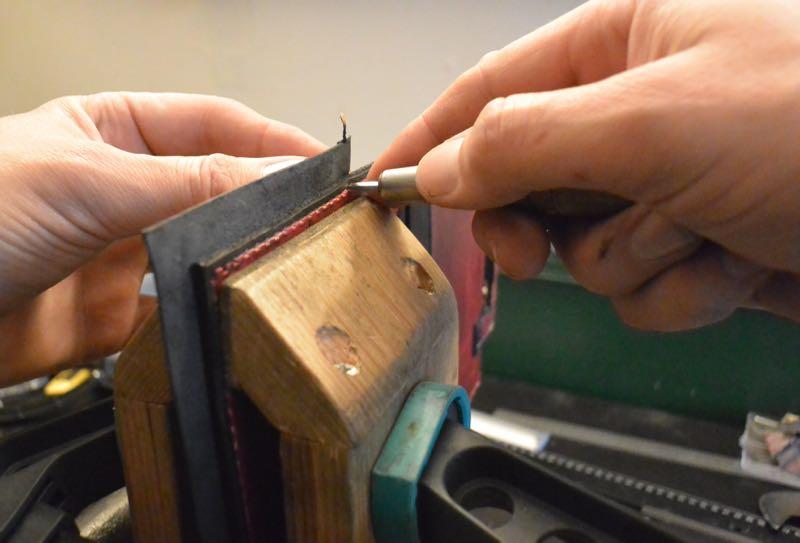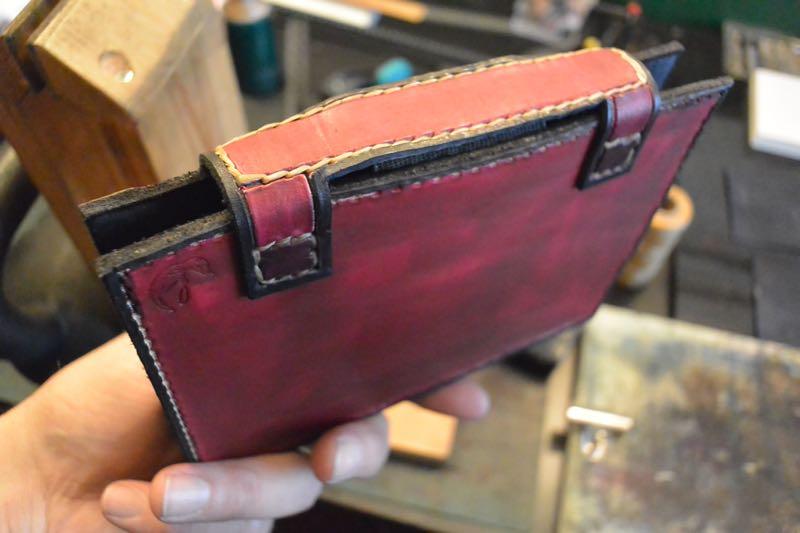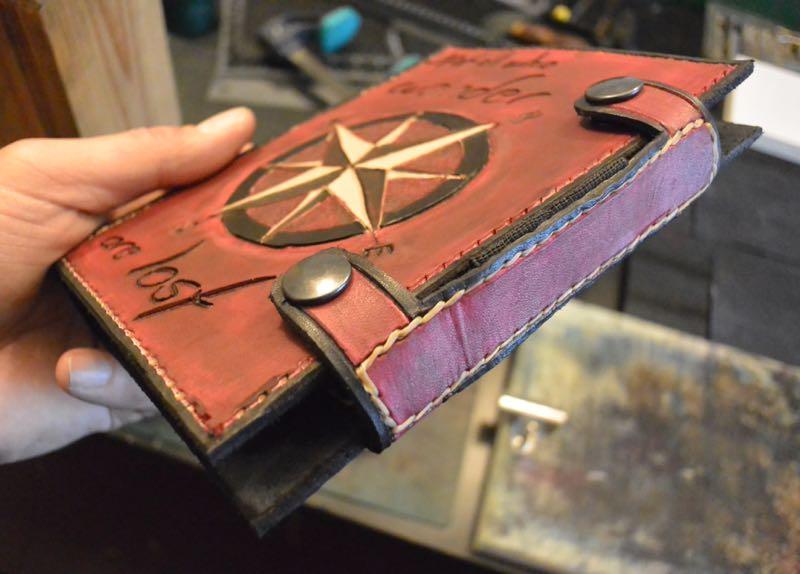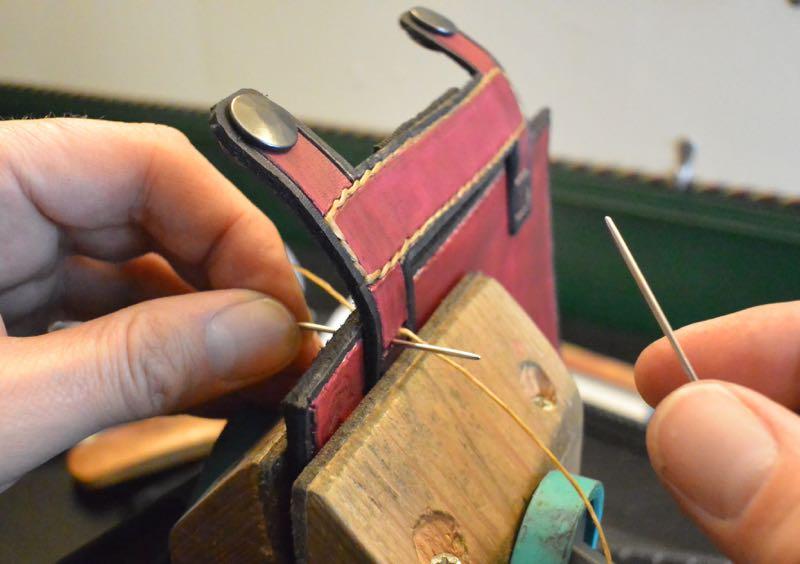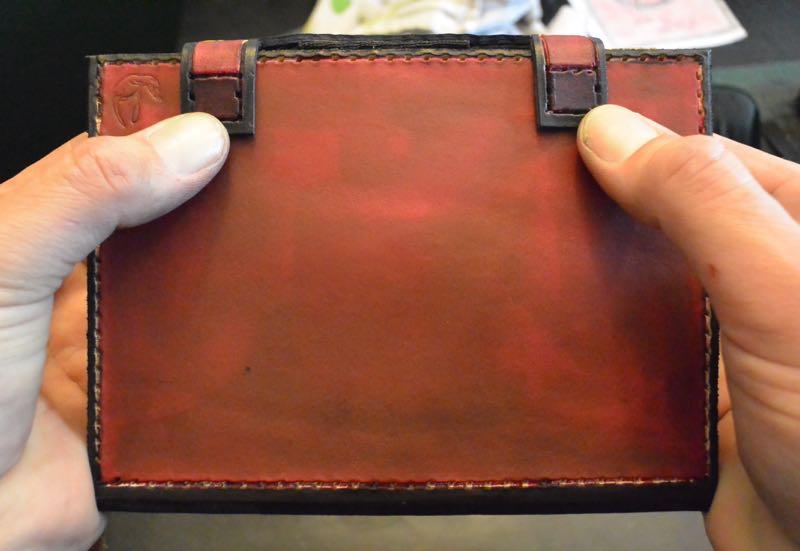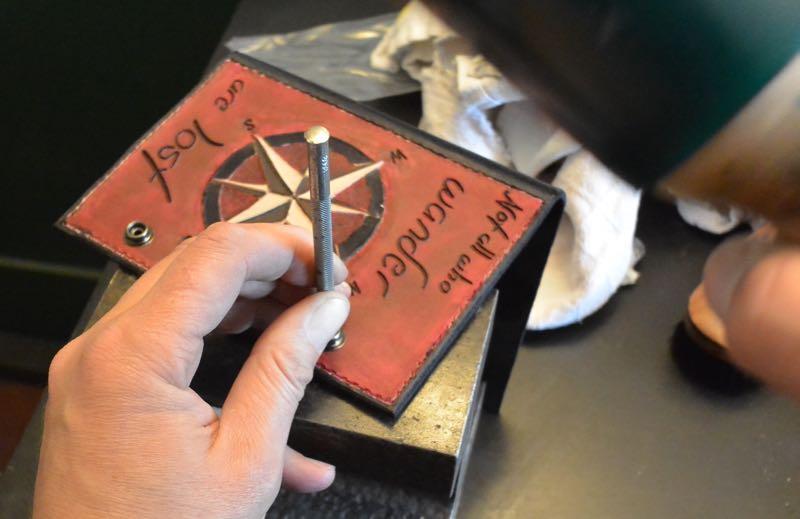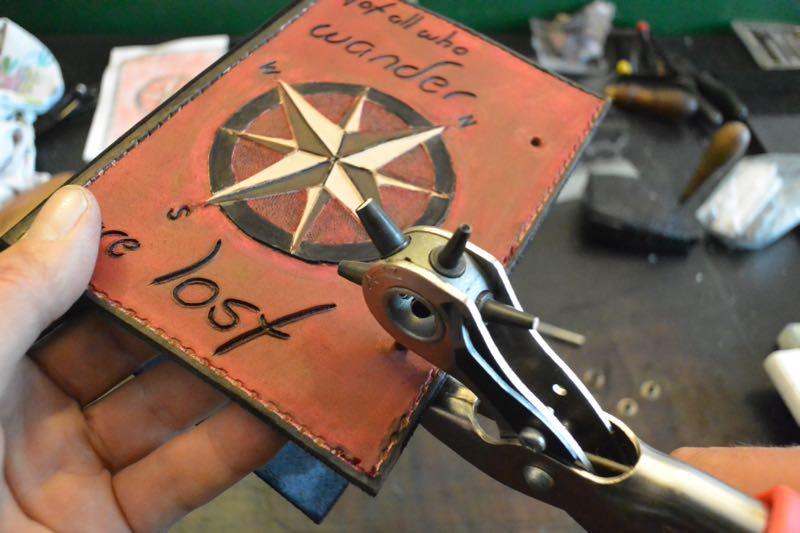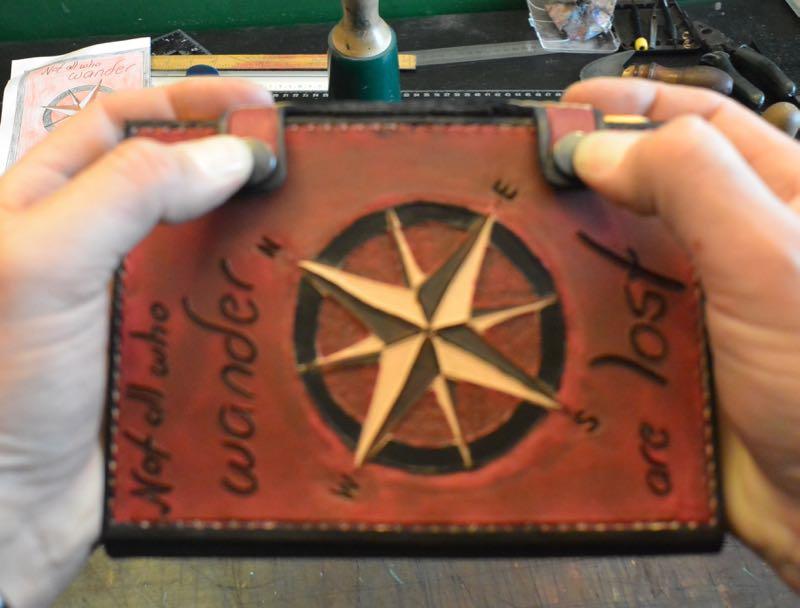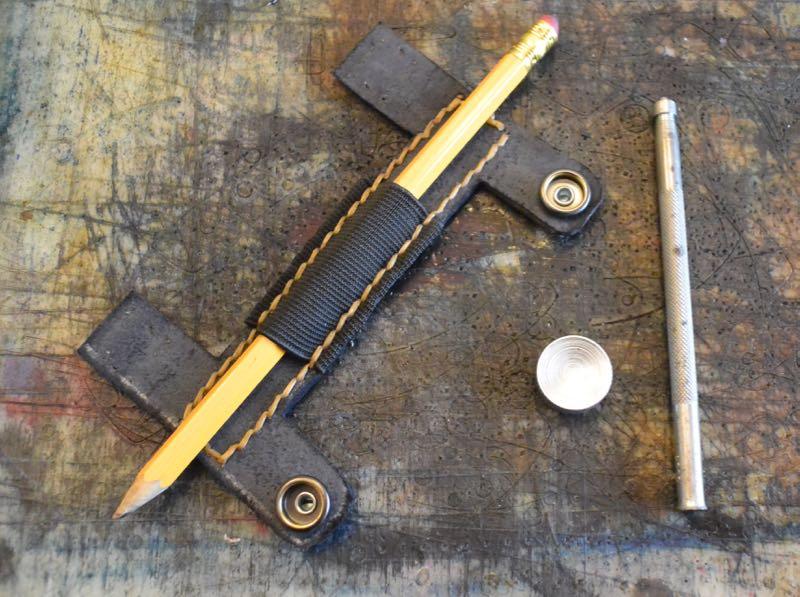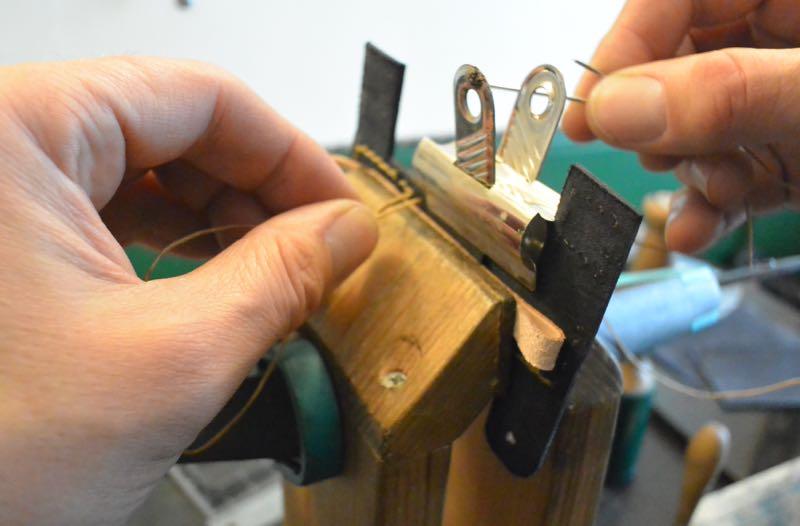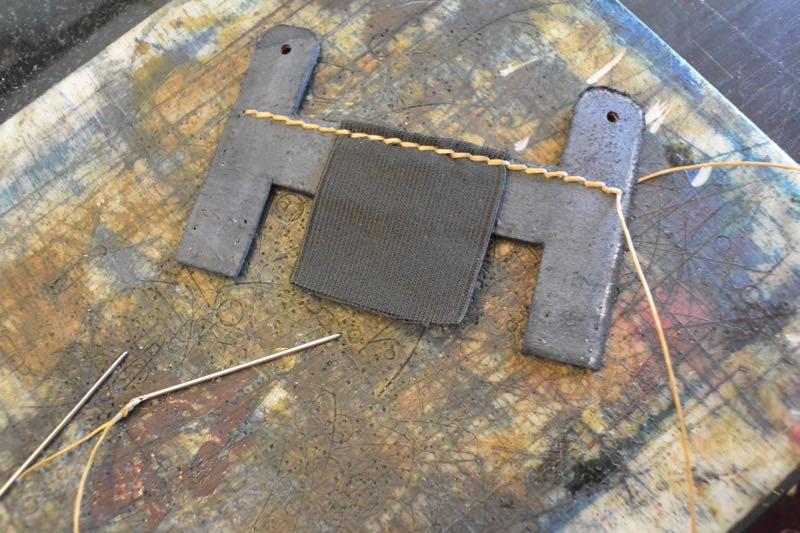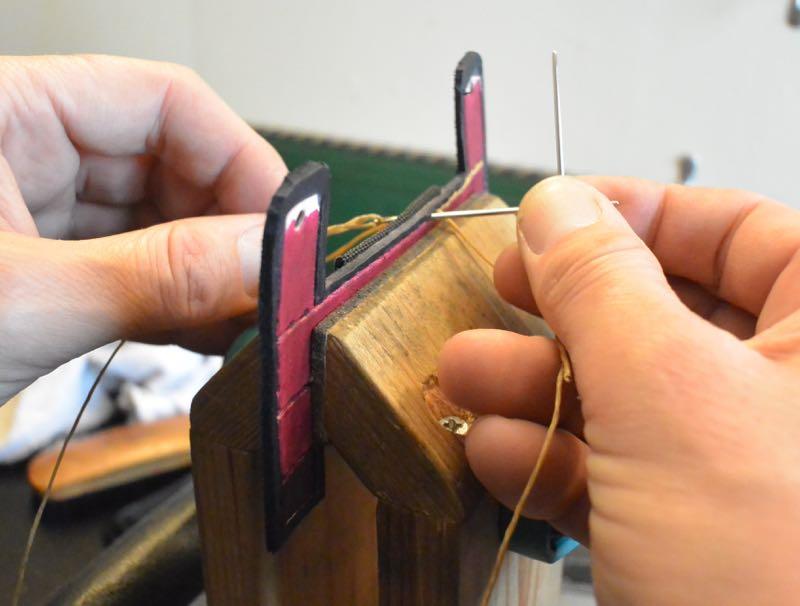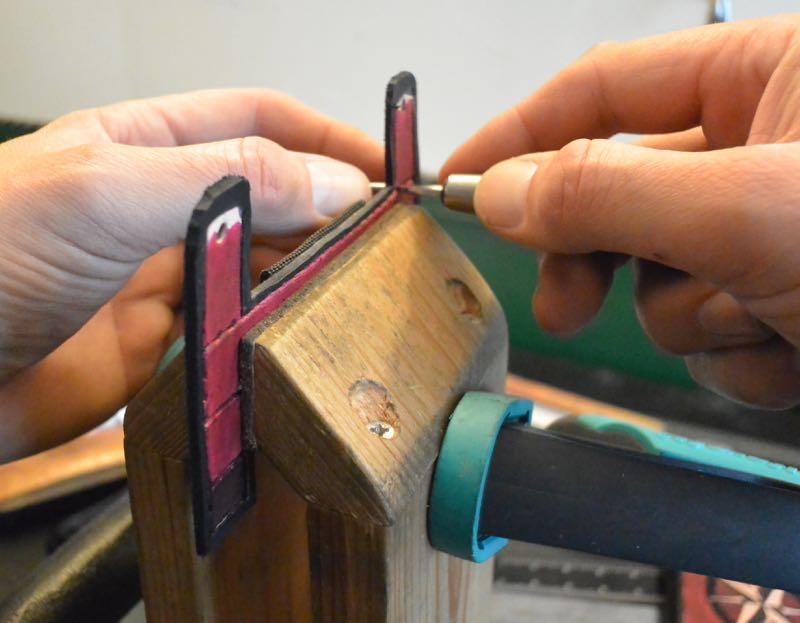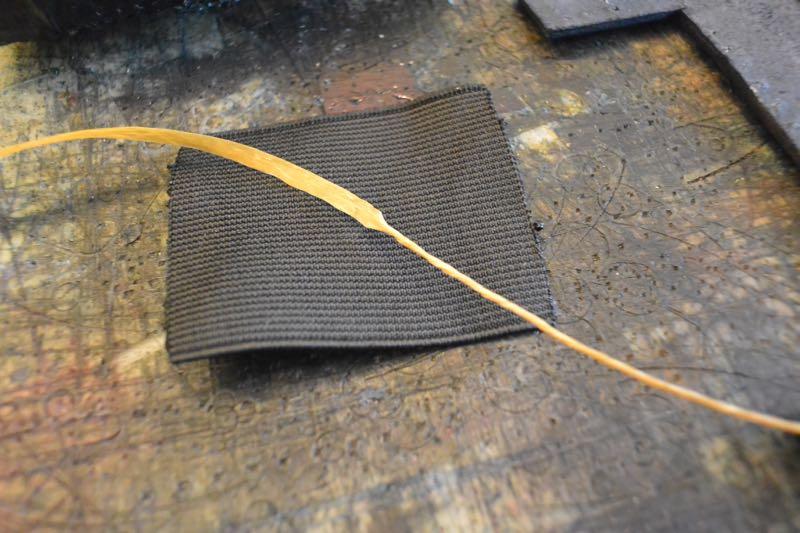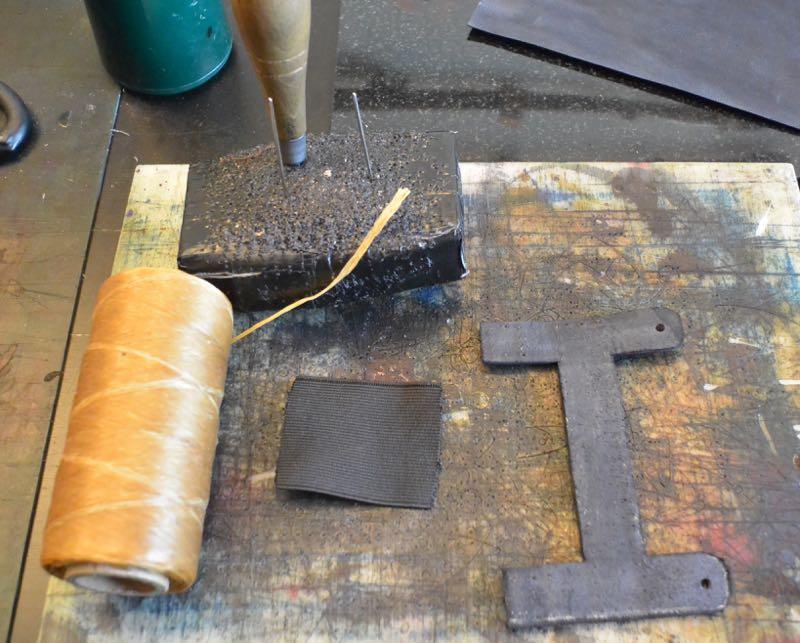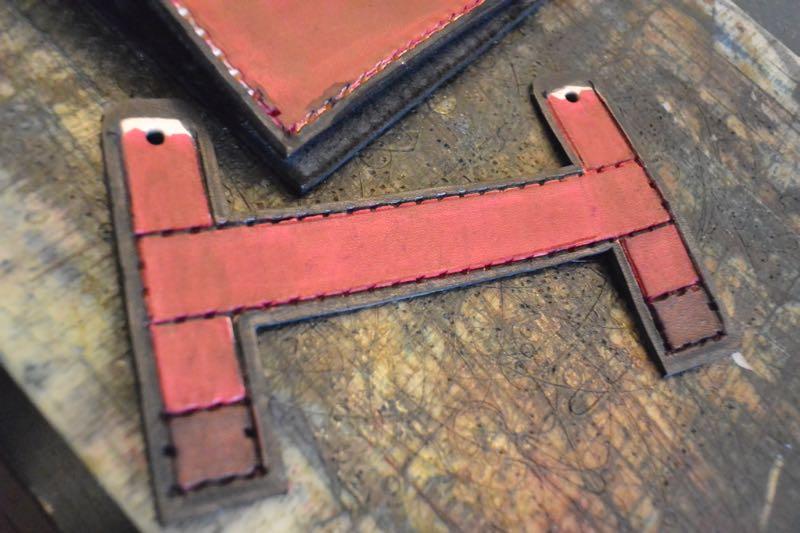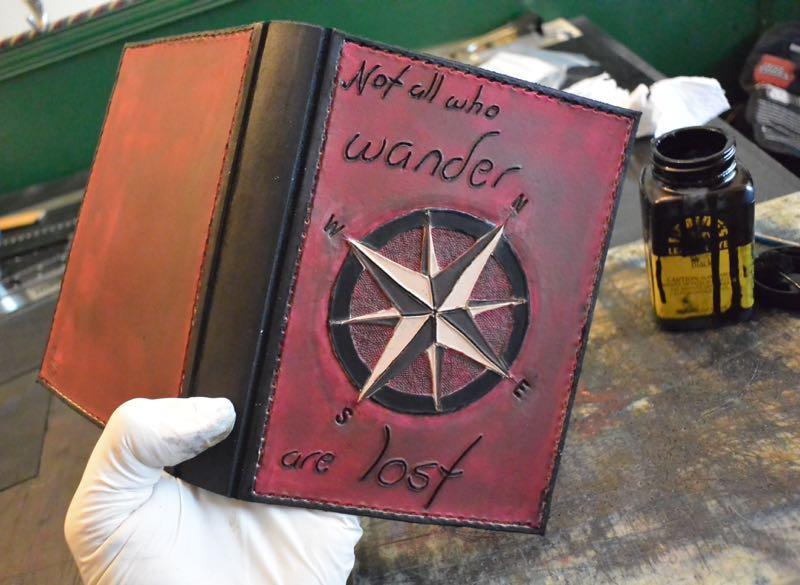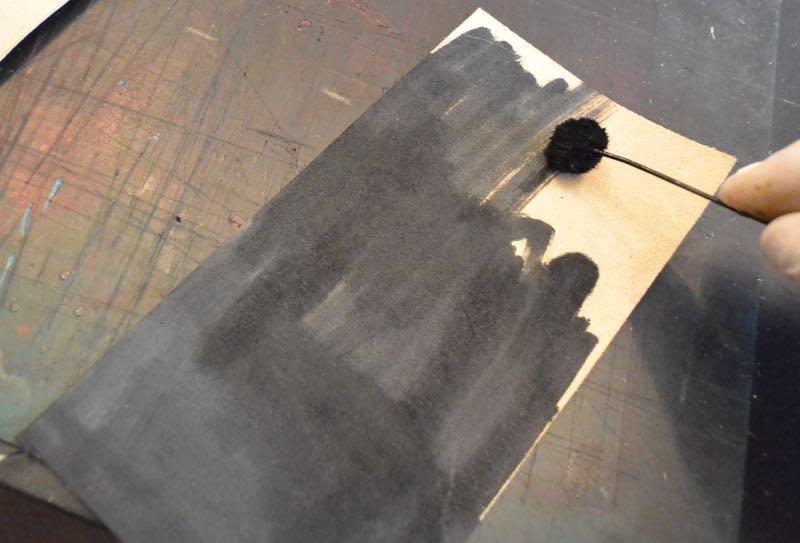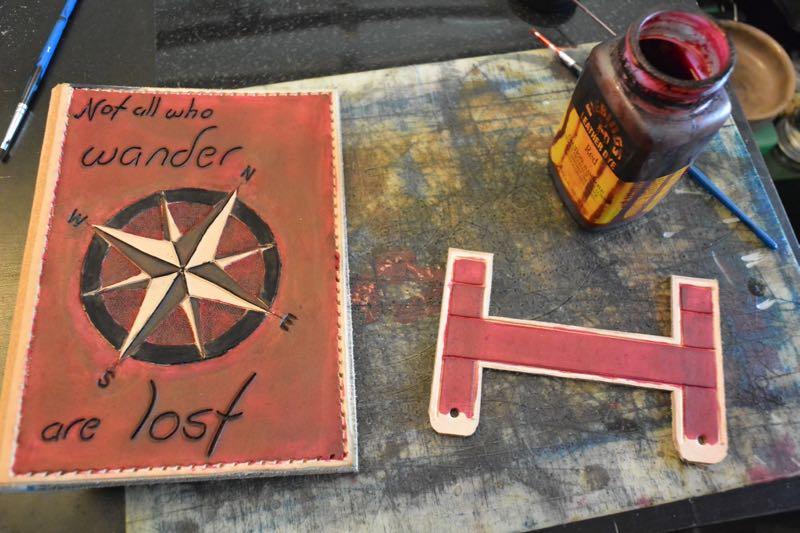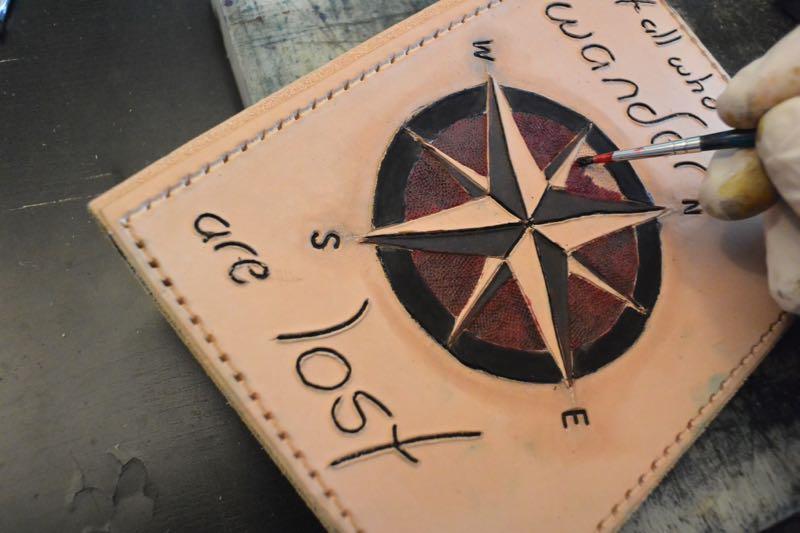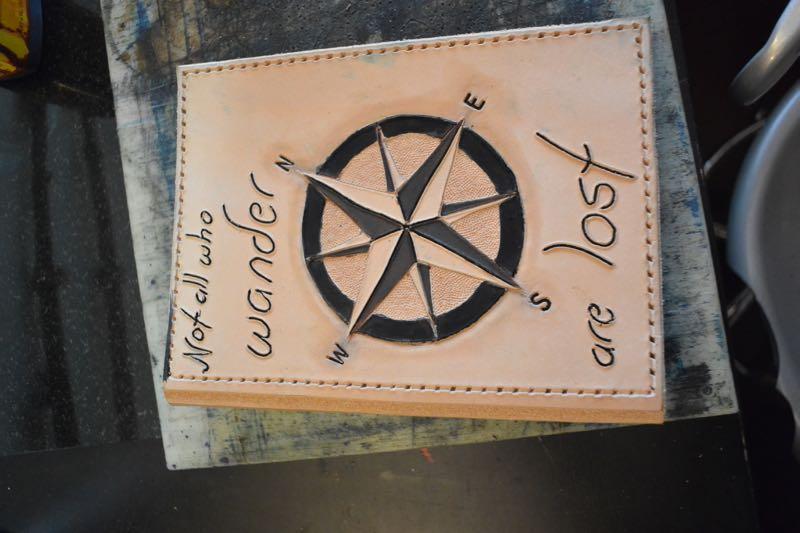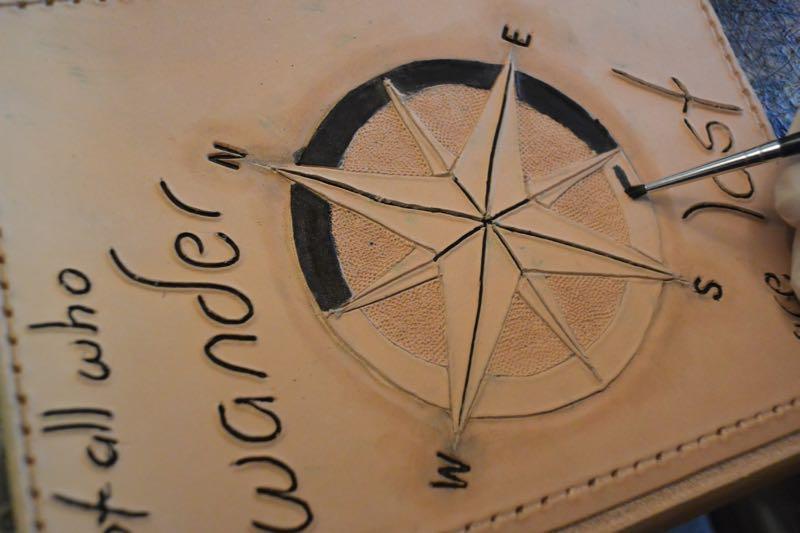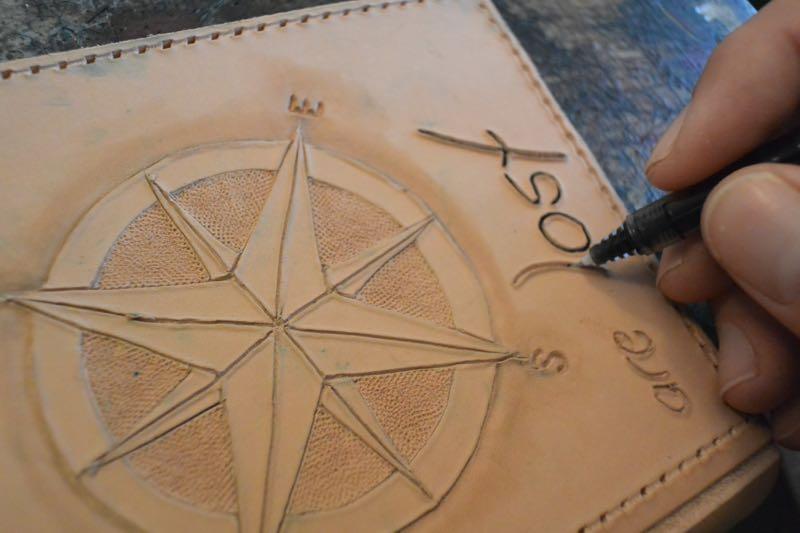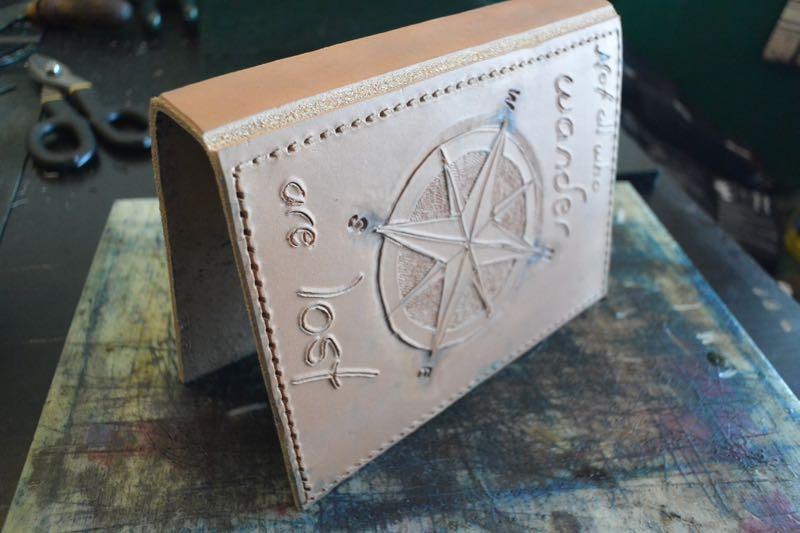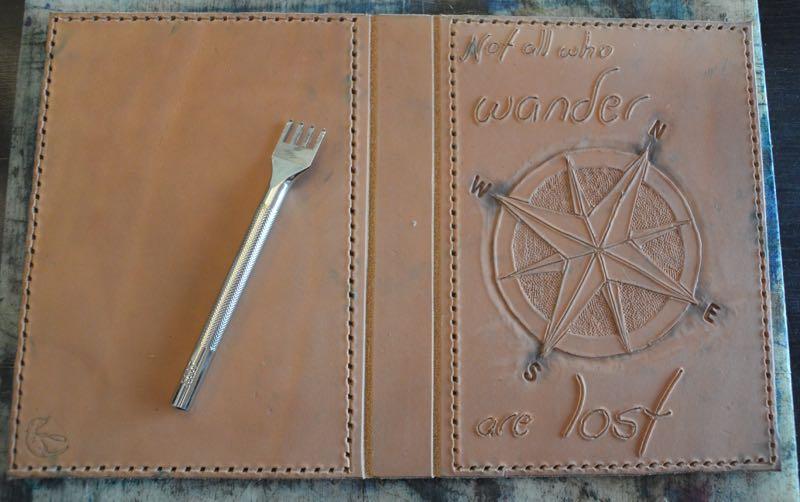-
Posts
76 -
Joined
-
Last visited
Content Type
Profiles
Forums
Events
Blogs
Gallery
Everything posted by MagiKelly
-
I agree. At the time I was still really concentrating on the wet forming process so not as concerned with decoration. I think I got distracted thinking about how it would be hard to carve the leather after wet forming or how carving would be ruined during the forming that I forgot the flap was flat and could be decorated without worry about damage
-
Looks great. I just got a laser this week so have a lot of learning in the software before I start using it in projects. I’m looking forward to it meaning I can use more intricate designs than I can pyrography by hand. I also might try using it to lightly burn on the outline of patterns I am going to pyro by hand. Will save some tracing time.
-
I like the look of the exposed discs. This may be because I use the metal discs mostly or just my preference. I have thought about having the discs internal to the book but then you lose the option of folding the front cover round to the back like a spiral bound notebook. If they are going to be inside it feels like the easier option is just to install a standard ring binder mechanism, which I have done on a number of books.
-
@Wepster I have a couple of punches. I used to have the happy planner one too but gave it to someone with a book so they could add their own paper. The two I still have and use are the staples one and the Atoma one. The Atoma one is really expensive and perhaps not worth the extra money. I eventually got it because I really like the Atoma aluminium discs. These discs have a flatter edge profile that the Atoma punch mimics, however they do work fine with the Stpales Arc punch. I just prefer the look of the Atoma holes with Atoma discs. From my experience any of the punches work with any of the discs and they all have the same spacing so are interchangeable. None of the punches will punch a lot of pages at once. I guess this is because of the amount of tabs you are punching that with a thick stack the forces needed would be too great. I should point out that none of the punches will cope with punching the leather covers. I tape a piece of punched paper to the leather. I use an oval hole punch to punch the rounded part of the mushroom tabs and then cut the straight stem parts with a craft knife. I have used standard thin copier paper in must of my books and had no problems so don’t think you will have any problems with that.
-
It is not a dumb question. I have given these to people who have not understood the way the rings work even when holding a book. It is straight forward when you see a page taken out and put in This page explains it well, I think, https://getorganizedhq.com/the-ultimate-guide-to-discbound-planners/ If you want more information I can take some pictures of covers without the discs to show how they are cut etc.
-
I just cut the leather and insert the discs. At first I thought it would only work with thick leather but I’ve used pretty thin leather and it works fine. Thinking about it, paper is really thin and it works fine. To make sure my cutting us accurate I tape a piece of paper, punched for the discs, to the leather as a guide.
-
I feel like I only do books but when I look back at my projects I do actually make other things. They are just not as prominent in my memory. This is a Swiss Army knife and torch belt pouch I made for a friends birthday. I was pretty pleased with how it turned out for being not my normal project.
-
It’s been a long time since I posted any of my work. I still seem to end up mostly doing books. I keep changing how the pages are added as I can’t decide what offers the best use. Currently I’m favouring Midori style or disk bound. I’ve also been gravitating to pyrography as my carving skills are wanting. Also I had an old alligator skin I was given by a neighbour who had it in their loft for years. I had it for a long time too without using it till I finally had an idea of how to use the section round the cloaca
-
Thanks. I love that this tutorial is still useful after all these years. I still consider myself very much a beginner leatherworker so it is great that my detailing what I do helps. I think this thread used to be a sticky but not sure if it still is. I am not involved in the admin here in any way and imagine it must be really difficult to pick which tutorials to “stick” from the many great ones posted.
-
It’s great to hear people still find this helpful. I still feel like a bit of a fraud as one of the least experienced leather workers but having a tutorial on here
-

Round Leather Lace Making Without any Special Tool
MagiKelly replied to nottotell's topic in How Do I Do That?
That looks so much easier than the way I was doing it with the tool where you cut a hole in the leather and work from the centre out. Also looks like I could use this with smaller offcuts for short lengths of lace. -

Refillable Leather Book / Journal Tutorial (Loads Of Pictures)
MagiKelly replied to MagiKelly's topic in How Do I Do That?
Thanks for saving another of my tutorials -
Thanks for doing this. It’s much appriaciated.
-
If I could edit the original [post I could attach the images, however, I am trying to get them reloaded to their original location so they just show again.
-
I don’t think adding the pictures directly was an option way back when I posted this. I’ll go have a look and see if I have a link to it on my canoe forum with pictures.
-
I feel your pain. Working the leather round the corners is a nightmare and takes ages to get it right. Things that help are making sure the corners on the form are rounded . Using thinner leather helps but may not be suitable for the project and of course using Veg Tanned leather. Every time I do it I get to a stage where I am certain I won’t be able to get it to work and every time it works out in the end after a lot of searing.
-
As always I need to give the disclaimer that I'm not the best person to be answering but I would say 2mm leather sounds a bit thin. It does need to be veg tanned leather but for moulding I tend to use quite thick leather. Probably 3.5mm or thicker. It certainly shouldn't need soaking for 2 hours. A few minutes should be plenty, although when you take it out the water you might want to let it soak in for 5 or 10 minutes. The leather is never stretchy like rubber, it is pretty stiff still. That's part of the reason I rounded all my corners and edges but it was still a testing process. Starting with a shape that is shallower may help to get the feel for it.
-
Thanks. I eventually got round to the journal tutorial. You can find it here http://leatherworker.net/forum/index.php?showtopic=63818&hl=
-

Refillable Leather Book / Journal Tutorial (Loads Of Pictures)
MagiKelly replied to MagiKelly's topic in How Do I Do That?
Hi Bob, yes the gouging will weaken the leather but I think because the leather is so thick and over engineered it should be okay. There is no strain on the leather it is just the flexing which should not wear it out. Of course only time will tell but so far there is no sign of failure or stretching. -

Refillable Leather Book / Journal Tutorial (Loads Of Pictures)
MagiKelly replied to MagiKelly's topic in How Do I Do That?
I posted this tutorial on BushcraftUK as well. During the discussions my old tutorial from 2007 was mentioned. It is interesting to see what has changed since then. http://www.bushcraftuk.com/forum/showthread.php?t=23987 The biggest changes are the tooling and dyeing. -

Refillable Leather Book / Journal Tutorial (Loads Of Pictures)
MagiKelly replied to MagiKelly's topic in How Do I Do That?
So there you are all done. Hopefully you now have something looking like this. I hope this has helped. Any questions let me know. If you manage to make a book I'd love to see pictures of it on this book. -

Refillable Leather Book / Journal Tutorial (Loads Of Pictures)
MagiKelly replied to MagiKelly's topic in How Do I Do That?
With the leather trimmed away from the second side we can fit the insert and the pen to see how it looks. With this book I've managed to end up with pretty straight edges. If you have not then sanding with rough sandpaper can help straighten up edges. Either way i still give the edges a light sanding to loosen up fibres for finishing the edges. I paint / soak the edges with tragacanth gum. Then I buff the edge with some cotton or linen. You can get wooden edge finishing tools for this but again I have had no luck with them. I have friends who use an electric buffing wheel with great success but I do not have one so it is manual labour for me. Still the result is worth it. We are really on the home straight now. Get yourself some carnauba wax / creme. Rub it well into the leather. Front, back, under the thin leather on the inside and everywhere else. I used way too much of the carnauba creme. Still it does not do any harm it is just wasteful. Let it soak in and dry overnight or for a day then polish it. I use a soft buffing brush for this. I find if I keep going back and polishing the book again every few hours or when I am passing for a few days it builds up a really deep shine. You may find you need to use a rule or piece of stiff card to separate the thin leather from the thick leather inside the cover. I slide a rule up and down in here every so often over a day or so to loosen up the leather and get it ready for the insert to be fitted. -

Refillable Leather Book / Journal Tutorial (Loads Of Pictures)
MagiKelly replied to MagiKelly's topic in How Do I Do That?
With the press studs fitted clip the closure on. Have the insert in place and line up the closure at the back. I mark the position with a pencil. And then again clamp in the stitching pony and stitch in position. Starting to take shape now. Time to stitch the thin leather on the inside of the covers now. I cut these bits of leather well oversized. No point in taking the risk of them being too small . Again clamp in the stitching pony and stitch like the wind :D And a different viewpoint just for a bit of variation. Smile for the camera One side all done. View of the inside. I trim the excess away using tin snips but scissors will do, as will trimming with a knife. Now time to stitch the other side. For this section you will need to rig up something to hold the closure out the way while you stitch the long edge. All stitched and ready for the leather on the second side to be trimmed. -

Refillable Leather Book / Journal Tutorial (Loads Of Pictures)
MagiKelly replied to MagiKelly's topic in How Do I Do That?
I am stitching this book with artificial sinew. I really like the look of the stitched sinew and use it in the majority of my projects now. The first bit of stitching will be the elastic onto the closure / pen holder. We need the sinew for this, a couple of needles and an awl. Using artificial sinew saves you all the hassle of colouring and waxing linen thread, however, straight off the roll it is flat. You need to roll the sinew to make it thread shaped. I rub it against my thigh a bit at a time till it is all done. I clamp the closure and the elastic in a stitching pony. I cannot recommend getting a stitching pony enough. It is so useful. Trying to hold the leather and stitch it at the same time is possible but far from fun. I pierce all the stitch holes in a run at once with the awl. Not the one hole then stitch you read in the books. Then I stitch the first run of stitching. I'm not going to even try and teach anything to do with actual stitching. I think I do it the way it is taught in other tutorials. It certainly seems to look like stitching I see elsewhere. If you need to learn I recommend Al Stohlman's The Art of Hand Sewing Leather. Going back along the other line of stitching I use a bulldog clip to keep the elastic where I want it to be. With the stitching to the pen holder finished I set the press studs. Now some more sizing. Put the insert inside the cover. Put the closure where you want it to sit. It is also a good idea to have a pen or pencil in the holder so everything is as it will be on the finished book. When you are happy with how everything is lined up, press the press studs against the cover to mark where they line up. Punch holes in the middle of these marks for fitting the press studs. And then set the press studs. -

Refillable Leather Book / Journal Tutorial (Loads Of Pictures)
MagiKelly replied to MagiKelly's topic in How Do I Do That?
Looking at the above pictures you will see the leather has dirty marks on it. The leather is darker where it is knocked or pressed back and in general it all looks rough. So if you liked the look of the finished pictures at the start of this thread and are currently thinking your attempt looks bad and will never work out, relax. It is the same when we move onto dyeing the leather. I always think it look awful until it is waxed and polished so brace yourself for that . I fold the book into the finished shape to dry. This is not compulsory but it does help the book sit in the closed position when dry. Otherwise the book will have the tendency to want to be open. Let the cover dry for a day. You can start dyeing when it is damp but I am starting this cover by colouring the letters with a fine black pen. Using a pen you are best to have good dry leather. This is where opening up the letters while they were damp will have really helped. You can try colouring these with a thin brush but I have had no success with that. Then I start dyeing the black circle of the compass with a fine brush. Steady as you go here. Don't overload the brush with ink or it may drip as you move it over the leather. Also rather than try to paint right to the edge I find that wetting the leather more near the edge will let the colour soak up to the edge where the cut will stop this going further. My preference for dyeing is using the alcohol based Fiebings dye. The brush I prefer I have trimmed the bristles to make them short and stiff to improve the accuracy. Again using a fine brush I have now coloured the legs of the compass. These are dark brown but look black in the pictures. The lighter parts are not coloured. The back of the compass is going to be red. As is the main part of the front and back of the cover and the closure. I dye the larger sections of these using the wool dauber. Then either colour up to the edge with a brush or dye the edges first and fill in with the dauber. You can see the colour looks patchy and in some places is a bit over a line or not quite up to it. If your work looks better than this then great but if not, again do not worry the finishing fixes a lot of this. Also I like the colour a bit mottled when finished as it makes it look more hand dyed rather than a factory dyed piece. The thin bits of leather to hold the insert in place are dyed black and this is done with the dauber. I dye them even in the bits that cant be seen. Know one but me will know but it would still bug me. Lastly I dye the outside edges of the cover and the spine of the cover. I have also punched the holes for the press studs on the closure. Carving and colouring done it is time to get stitching.



